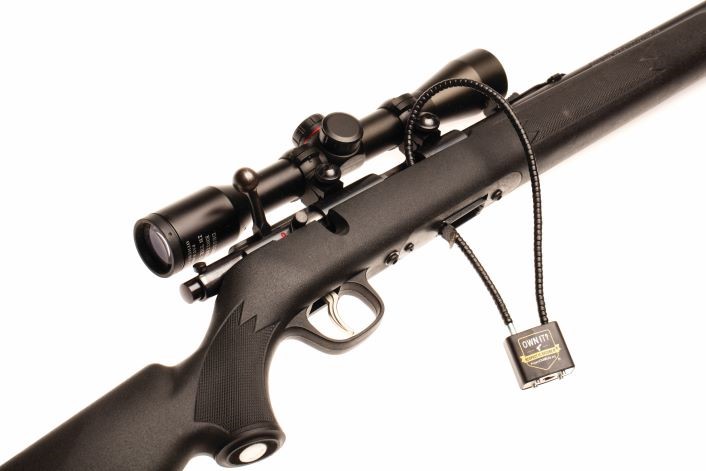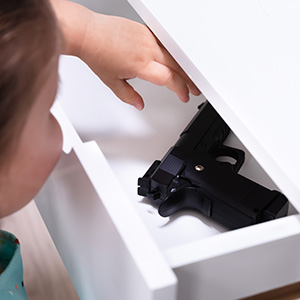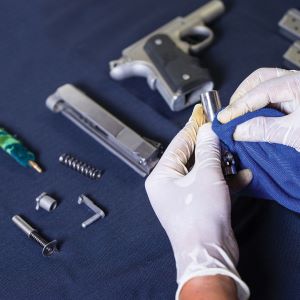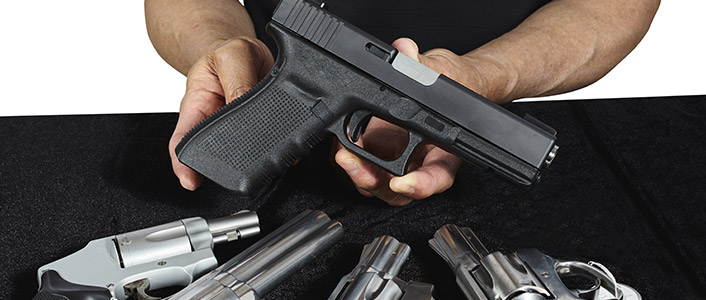
So, you’re a new gun owner, welcome to the club! You might be asking yourself, “What now?” We’re here to provide some judgment-free tips and answers to questions in this beginner’s guide to guns that you may not have known to ask. You’re probably a bit nervous and want to make sure you understand gun safety rules to avoid a mishap.
It’s okay, we’ve all been there as newbie gun owners, and we know it can be a little intimidating to mingle with lifelong gun folks who’ve been speaking the lingo for decades.
Keep reading to learn the beginner’s basics of:
- Gun laws
- 4 Rules of Gun Safety
- Getting to know your new gun
- Ammunition
If you’re still just thinking about buying a gun, check out our 4 Quick Tips for Buying a Handgun (don’t worry, everything there applies to shotguns and rifles, too).
Know Your Gun Laws
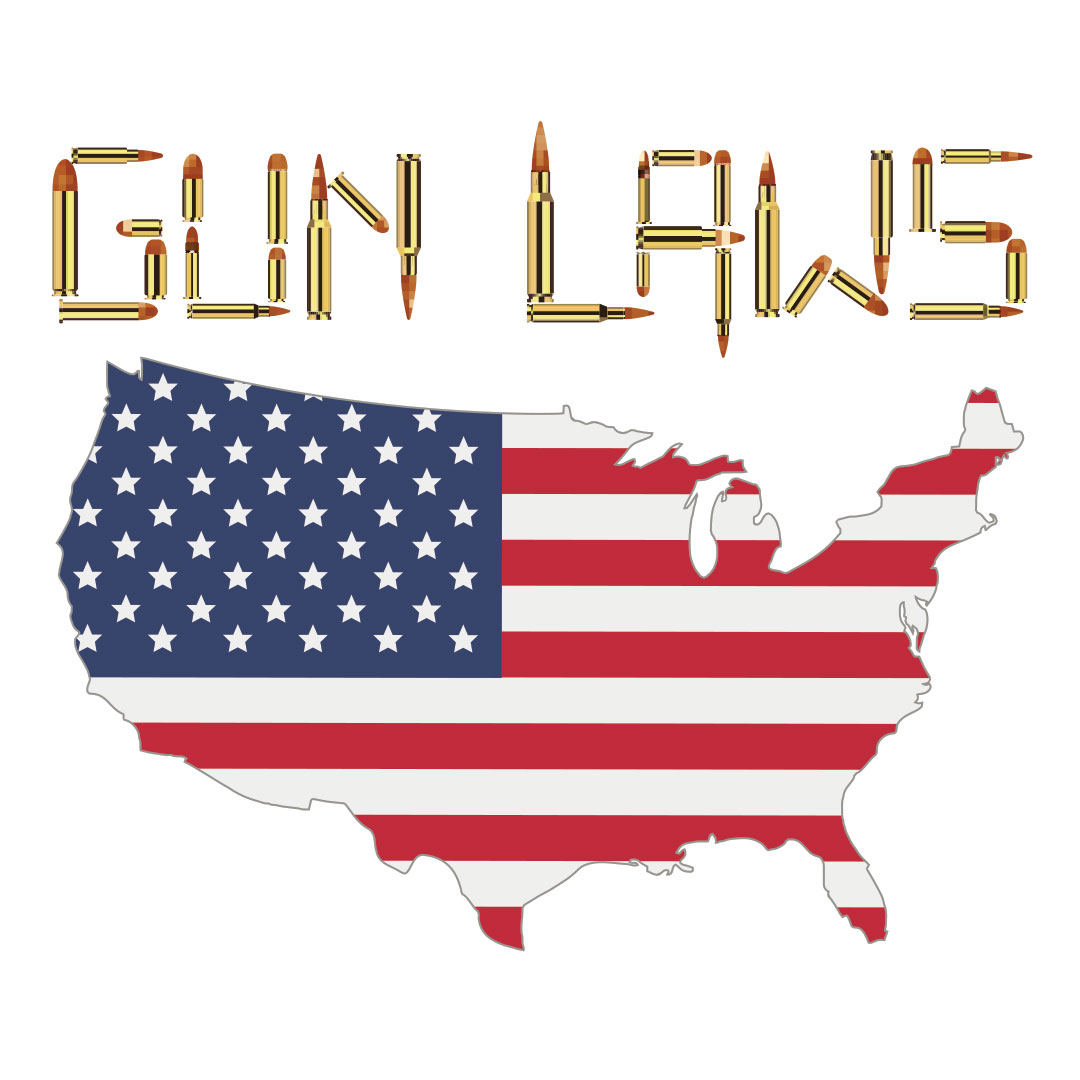
Get to know all of your gun laws, including federal, state, county, and city.
Gun laws can vary depending on where you live. State laws may be different from federal laws, county laws may be different from state laws, and local laws may be different from county laws. These laws may dictate the type of gun you can own, the kind of accessories you can use, how you carry it in public, or how you transport and store it. No beginner’s guide to guns could hope to cover all the firearm laws across the country.
Failure to comply with these laws could result in criminal charges, so you should rely on reputable sources and expert legal opinions.
As a safeguard, reputable gun stores won’t sell you something you’re not legally allowed to have, but it’s still good practice to review and comply with laws regarding gun ownership in your locality. These laws are public information and are made available online by your state and local governments.
Additionally, it’s important to understand the gun laws of the places you might take your firearms. Something legal in one state might be illegal in the next, so if you’re crossing state lines, make sure you’re up to speed!
If you’re uncomfortable with your own research, you might want to consider contacting your local police department for more information about complying with gun laws or seek out legal counsel to help navigate the red tape. This will usually be a criminal defense attorney, but you can easily find firearm lawyers near you with a quick online search. The money you invest early could save you a lot of time and trouble in the long run.
The NRA-ILA Gun Laws page is a good starting point no matter how much experience you have. Also, if you’ll be flying somewhere, check out the TSA Transporting Firearms & Ammunition page before you travel.
Beginner’s Guide to Guns: Gun Safety Rules
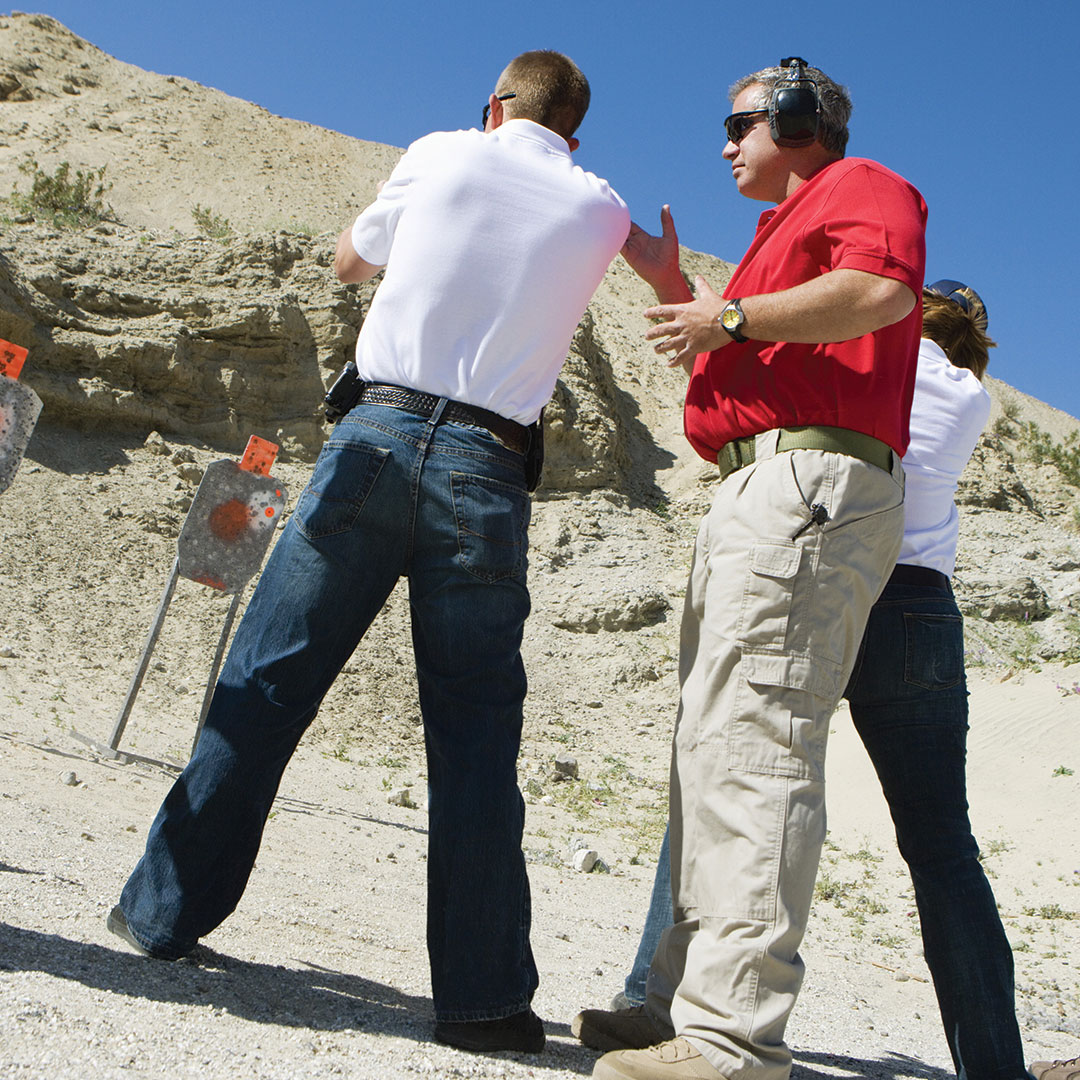
Learn from a professional.
Even before you take your new gun out of the box (although you probably already have), it’s important to know and practice the four rules of gun safety:
- Always treat every gun as if it’s loaded.
- Always point the muzzle in a safe direction.
- Always keep your finger straight and off the trigger until you’re ready to fire.
- Always be sure of your target and what’s behind it.
If you don’t have extensive firearms experience, consider taking a basic introductory safety and shooting course. A certified instructor will provide foundational information in an appropriate learning environment. They’ll teach you the gun safety rules and more. Most local gun ranges offer training, but instructor certification may vary. Most certified instructors are NRA-Certified which means, at the very least, they are qualified to teach an introductory course.
Safe Storage
Safely storing your gun(s) and ammo is extremely important. Even if your home is child-free and you feel that you live in a safe neighborhood, it’s still your responsibility to prevent unauthorized access to your guns. In some states, there are legal requirements for gun storage, so be sure to check your local laws.
At OpticsPlanet, we have a wide variety of Gun Storage options depending on your needs. If you aren’t sure what to look for, read our Gun Safes Big & Small – What Do I Need? and Gun Safe Buyer’s Guide for pointers to help you whittle down your choices.
New Gun Owner Accessories
Some of the most important new gun owner accessories you can buy are eye and hearing protection. These two simple, yet all too often neglected, safety tools need to be at the top of your list. You can browse our selection of Shooting Glasses and Hearing Protection or learn more about Hearing Protection for Shooting Situations.
There are tons of other shooting accessories depending on what sort of gun you have and what your applications are. If you have a handgun and plan to carry or attend classes, you may want a holster. Be prepared to try a few different ones to find what fits you. Gun cases are a must for transportation and come in very handy for storage. If your gun uses a detachable magazine, having at least two or three extra mags is always a good idea if only to save you reloading time when you’re at the range. If you have a rifle or shotgun, having a sling is almost a must if you plan to carry it at all.
Learning the Lingo
What’s the point of a beginner’s guide to guns if you can’t understand the language? Firearm lingo can be a confusing second language, even if you have some knowledge already. Here are some references we’ve put together to help you understand common terms you’ll hear in gun shops or at the range:
You’ll also find great handgun tips for beginners in our Beginner’s Guide to Owning a Pistol.
Prep & Upkeep of Your Gun
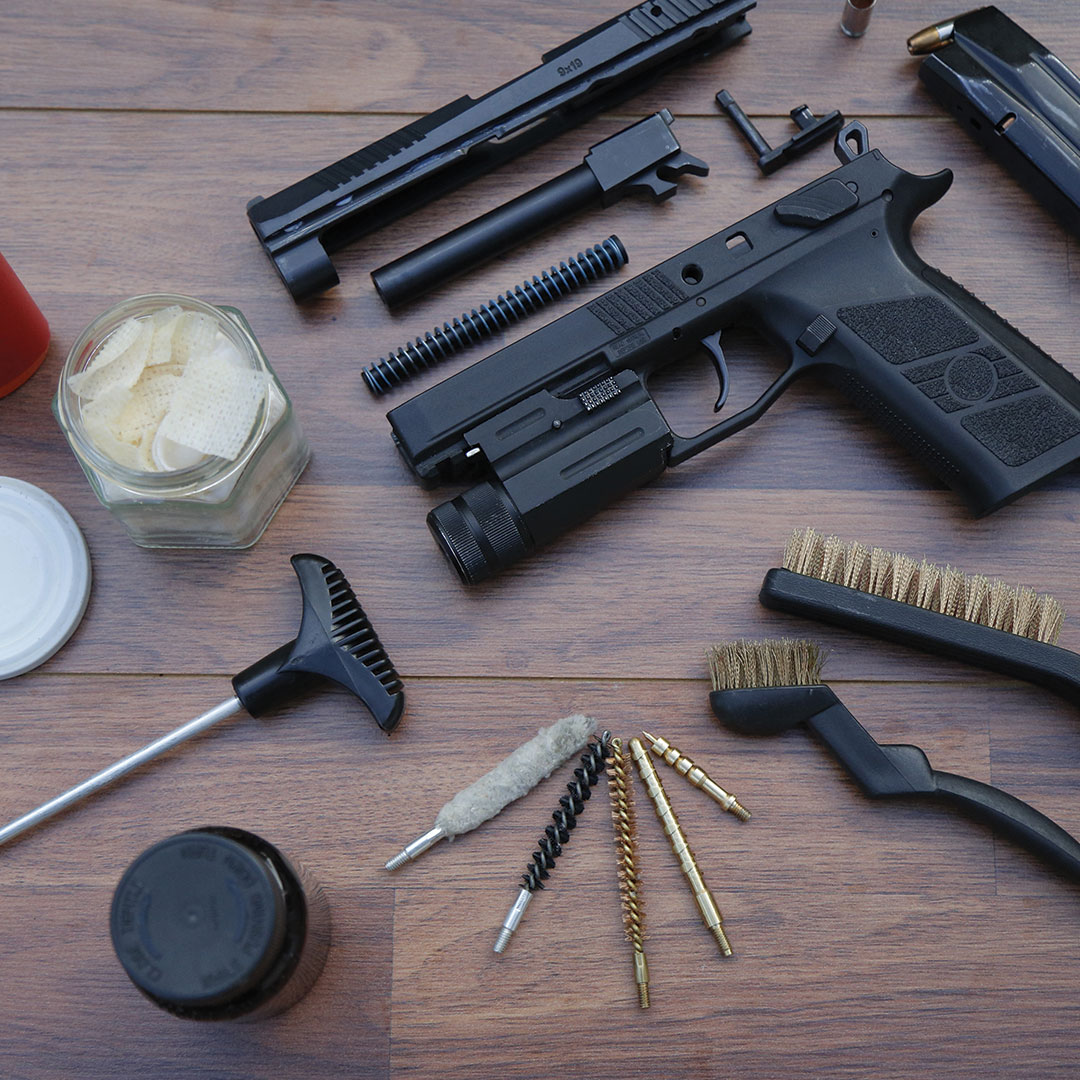
Getting familiar with your new gun is one of the first things to do.
One great way to get familiar with your gun is to clean it. Keep in mind the four rules of gun safety whenever you handle your gun. The first thing you’ll need to do is “field strip”, or take apart, your new gun. Refer to your owner’s manual for field-stripping instructions. Also, our YouTube channel is a great resource for learning a lot more about firearms maintenance, along with a host of other related content.
You’ll be fine buying any basic universal cleaning kit. Everyone who owns a gun should also own a gun cleaning kit for regular maintenance.
Beginner’s Guide to Guns: Helpful Articles on Gun Cleaning
We also have several articles showing you how to clean the most common kinds of firearms:
- How to Clean a Muzzleloader
- How to Clean a Revolver
- How to Clean a 1911
- How to Clean a Glock Pistol
- How to Clean an AR-15
- How to Clean a Remington 870 (this is the same for most pump shotguns)
- How to Clean a Mossberg 930 (this is the same for most semi-auto shotguns)
Dry-Fire Practice
Dry-fire practice is training without the ammunition. Grip, sight picture/sight alignment, and the trigger press can all be practiced without firing a single round. It can not only improve your skills but save a lot of money on ammo. Do this before you take a basic safety course with a professional instructor. It will allow you to get a feel for the gun’s trigger pull and break, lingo referring to how hard it is to squeeze the trigger before setting off the firing pin. Again, we stress that your primary concern should always be the 4 rules of gun safety.
Dry-fire practice is useful for all skill levels. Most professional competitive shooters practice this way frequently. It allows you to work the slide on semi-automatics and try out your gun without the danger of live ammunition. Of course, continue to follow the safety rules and treat every gun as if it’s loaded! Dry-fire practice can be done on all firearms, no matter what kind of action it has. To preserve your gun from excess wear, though, Snap Caps and Dummy Rounds are inexpensive and designed for only this purpose (and are essential for any rimfire gun).
Off to the Range!
All right, you’ve gone to your basic shooting class, you’ve done some dry fire practice, you’ve checked out Keith Warren’s Shooting Tips, you’ve read through A Day at the Range, memorized the four rules of gun safety by heart, and now you want to get out to the range for the real thing. Here are some important things to know before you go:
- If you go to an outdoor range, bring your own targets and a stapler to hang them up. Indoor ranges generally sell paper targets, but you could still bring your own.
- If you have a scoped gun, bring a boresight to begin sighting in your scope. Boresighting is important and will save you a lot of ammunition, but it will only get you onto the paper. From there, you’ll want to get it dialed in for real accuracy. You can read more about this in our How to Zero A Riflescope article.
- ALWAYS clean up after yourself! It’s just the right thing to do and it is a common courtesy among shooters. Most shooting ranges have garbage cans readily available for just this reason. So, remember to dispose of any used paper targets (or keep them for bragging rights) and throw away empty ammo boxes; collect reusable targets; and pick up empty brass (most ranges have buckets for brass, too). One quick note, discard or recycle rimfire casings, they can’t be reloaded.
A Few Words About Ammo
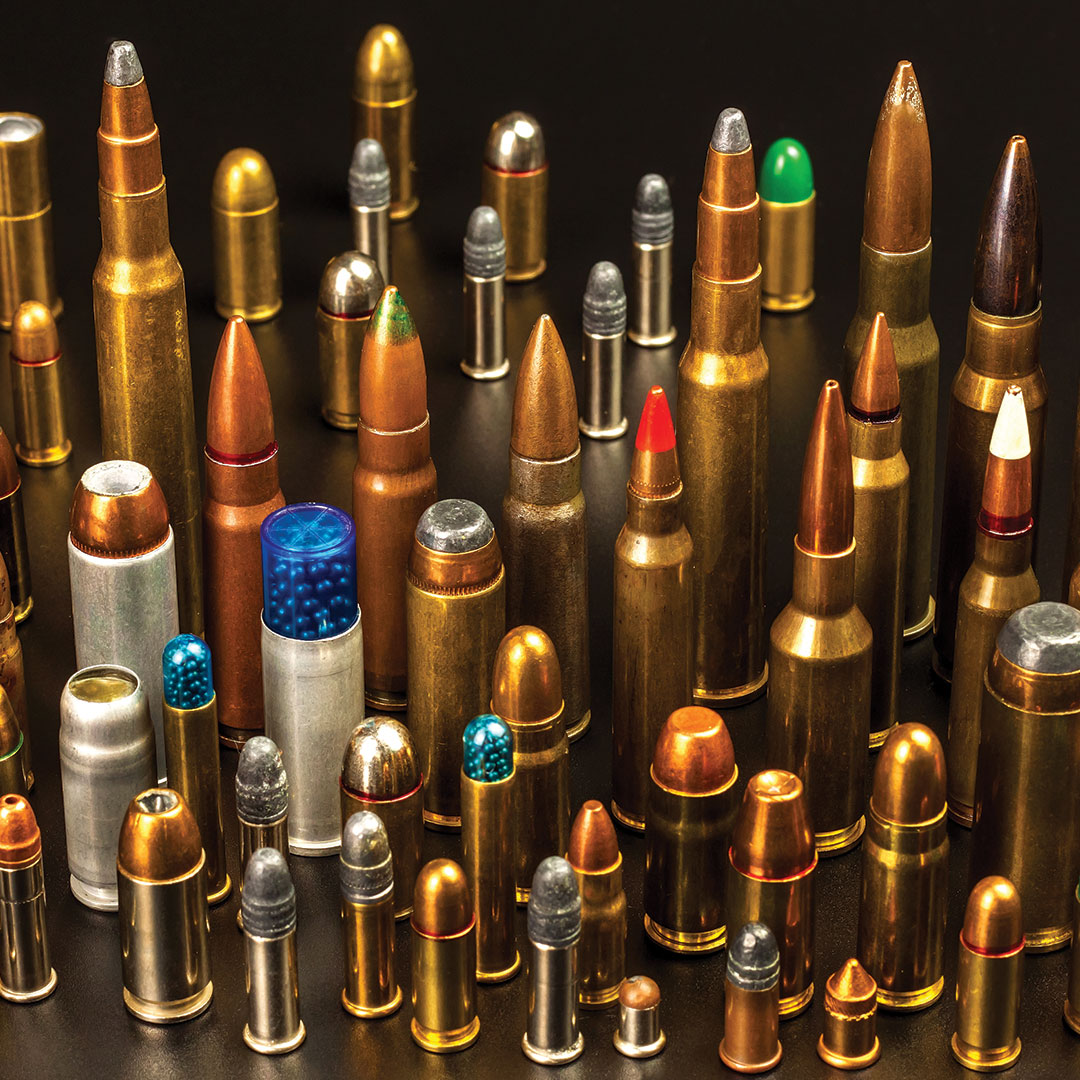
There’s a wide variety of ammunition, depending on what you need it for.
When you’re new to shooting, the variety of ammunition available can be a little overwhelming. You may not know exactly what to buy. Here are some tips to get you started:
- Make sure the ammo matches the markings on your gun.
- The caliber and cartridge configuration will be clearly marked on the barrel and/or receiver of the gun, found in the owner’s manual, and readily available on the manufacturer’s website.
- Just because it fits doesn’t mean it’ll work. Loading incorrect ammunition could permanently damage your gun and/or result in serious injuries.
- Get help from a trusted resource like the manufacturer’s website, the store that sold you the gun, or a reputable website.
- Match your ammo to your application. What you want to do with your gun, like hunting, target shooting, or self-defense, will dictate what kind of ammo to buy. This is broken down in simple terms in our Selecting Ammo by Application buyer’s guide.
- If you’ve never loaded a magazine or are having trouble with them, look over our article on How To Load A Magazine. Our Speed Loaders will make this process a lot faster and easier, especially for people who have diminished strength and dexterity in their hands due to issues like arthritis. They’re very easy to buy, just pick out the one that matches the make and model of your gun and you’re ready to go.
- Depending on where you live, you can order ammo online for convenience and savings.
- Here are helpful links for ammunition shopping:
Parting Shots
At this point, you should have a better feel for where to check your local firearms laws, gun safety, storage, familiarity with your gun, dry-fire practice, ammunition, and heading to the range. In addition to this beginner’s guide to guns, you can always learn more from our GearExpert blog and How-To Guides from our industry experts. Click the social links to share this article, leave a comment and tell us what you think, or visit OpticsPlanet for all your shooting supplies and more!
- Do all 9mm bullets fit 9mm guns? 3 Popular 9mm Calibers - August 13, 2021
- Hot Weather Tips: 5 Easy Hacks - July 19, 2021
- The Bugout Bag and The Family Bugout Bag 101 - June 18, 2021
Related Posts
« How to Dry Fire: 5 Training Tips and Truths Tactical Pants Materials: A Look at Fibers, Weaves and Finishes »


